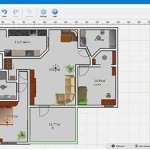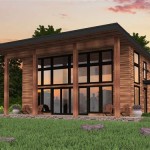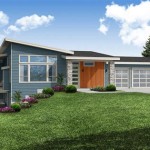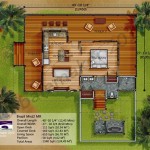Prefabricated house plans provide an efficient and cost-effective solution for modern home construction. These plans involve the creation of standardized building components, such as walls, floors, and roofs, which are manufactured off-site and then assembled on-site to form a complete house. For example, a prefabricated house plan for a three-bedroom home could include detailed specifications for the dimensions, materials, and assembly instructions for each component.
Prefabricated house plans offer numerous advantages over traditional on-site construction methods. They reduce construction time significantly, as the components are pre-built and require minimal on-site assembly. This not only saves time but also minimizes the potential for delays due to weather or other factors. Additionally, prefabricated houses are typically more energy-efficient and environmentally friendly, as they utilize advanced building techniques and materials designed to optimize thermal performance and reduce waste.
Prefabricated house plans offer numerous advantages over traditional on-site construction methods. Here are 8 important points to consider:
- Reduced construction time
- Lower costs
- Improved energy efficiency
- Increased durability
- Less waste
- Greater design flexibility
- Simplified maintenance
- Faster return on investment
Prefabricated house plans provide a modern and sustainable approach to home construction, offering a range of benefits for homeowners and builders alike.
Reduced construction time
One of the primary advantages of prefabricated house plans is the significant reduction in construction time. Unlike traditional on-site construction, which can take several months or even years to complete, prefabricated homes can be assembled much more quickly.
The reason for the reduced construction time is that the components of a prefabricated house are manufactured off-site in a controlled environment. This allows for a more efficient and streamlined production process, as the components can be produced simultaneously and under optimal conditions.
Once the components are manufactured, they are transported to the building site and assembled into the final structure. This assembly process is typically much faster than traditional on-site construction, as the components are designed to fit together precisely.
The reduced construction time offered by prefabricated house plans provides numerous benefits. It can save homeowners time and money, as they can move into their new homes sooner. Additionally, it minimizes the potential for delays due to weather or other factors, ensuring a more predictable construction timeline.
Overall, the reduced construction time associated with prefabricated house plans makes them an attractive option for homeowners who are looking to build a new home quickly and efficiently.
Lower costs
Prefabricated house plans offer lower costs compared to traditional on-site construction methods. This is due to several key factors:
- Reduced labor costs: Prefabricated homes require less labor to build, as the components are manufactured off-site and assembled on-site. This can result in significant savings on labor costs, as fewer workers are needed and the construction process is more efficient.
- Bulk purchasing: Prefabricated home builders can purchase materials in bulk, which allows them to negotiate lower prices from suppliers. These savings can be passed on to homeowners in the form of lower construction costs.
- Optimized design: Prefabricated house plans are designed to be efficient and waste-reducing. This means that there is less material waste during construction, which further reduces costs.
- Simplified construction process: The streamlined construction process associated with prefabricated homes reduces the potential for delays and costly rework. This can help to keep construction costs under control.
Overall, the lower costs associated with prefabricated house plans make them an attractive option for homeowners who are looking to build a new home without breaking the bank.
Improved energy efficiency
Prefabricated house plans offer improved energy efficiency compared to traditional on-site construction methods. This is due to several key factors:
- Optimized building envelope: Prefabricated homes are designed with a focus on creating a tight building envelope, which minimizes air leakage and heat loss. This is achieved through the use of advanced building techniques, such as panelized construction and airtight seals.
- High-performance windows and doors: Prefabricated homes typically feature high-performance windows and doors that are designed to reduce heat loss and solar heat gain. These windows and doors are often made with multiple panes of glass and have low-emissivity coatings.
- Advanced insulation: Prefabricated homes are insulated with high-performance insulation materials that provide excellent thermal resistance. This insulation is installed in the walls, floors, and roof to minimize heat loss and improve overall energy efficiency.
- Energy-efficient appliances and systems: Prefabricated homes can be equipped with energy-efficient appliances and systems, such as ENERGY STAR-rated appliances and high-efficiency HVAC systems. These appliances and systems consume less energy and help to reduce overall energy costs.
The improved energy efficiency of prefabricated house plans provides numerous benefits for homeowners. It can reduce energy bills, improve indoor comfort, and contribute to a more sustainable lifestyle.
In addition to the above factors, prefabricated homes are often built with sustainable and environmentally friendly materials, such as recycled steel and wood. This further enhances the energy efficiency and environmental performance of these homes.
Increased durability
Prefabricated house plans offer increased durability compared to traditional on-site construction methods due to the following factors:
- Precise engineering and quality control: Prefabricated homes are designed and engineered to meet strict quality standards. The components are manufactured in a controlled environment, which allows for greater precision and quality control than is possible with traditional on-site construction.
- Durable materials and construction techniques: Prefabricated homes are typically built with high-quality, durable materials, such as steel frames, concrete panels, and engineered wood products. These materials are designed to withstand harsh weather conditions and provide long-lasting performance.
- Closed-panel construction: Many prefabricated homes are built using closed-panel construction methods. This involves assembling the walls, floors, and roof panels in a factory and then transporting them to the building site for final assembly. Closed-panel construction helps to protect the home from moisture and pests, and it also provides increased structural strength.
- Reduced risk of construction defects: The controlled manufacturing environment and rigorous quality control measures associated with prefabricated homes reduce the risk of construction defects. This helps to ensure that the home is built to last and requires less maintenance over time.
The increased durability of prefabricated house plans provides numerous benefits for homeowners. It can extend the lifespan of the home, reduce maintenance costs, and improve overall peace of mind.
Less waste
Prefabricated house plans offer significantly less waste compared to traditional on-site construction methods. This is due to several key factors:
- Optimized material usage: Prefabricated homes are designed to minimize waste by using materials efficiently. The components are cut and assembled with precision, which reduces the amount of scrap material that is produced.
- Off-site construction: The off-site manufacturing process allows for better control over material usage and waste management. The controlled environment and advanced manufacturing techniques help to minimize waste and ensure that materials are used efficiently.
- Modular design: Prefabricated homes are often designed using a modular approach, which involves creating standardized components that can be combined in different ways to create different floor plans and designs. This modularity reduces waste by allowing components to be reused in different configurations.
- Sustainable materials: Prefabricated home builders often use sustainable and environmentally friendly materials, such as recycled steel and wood. These materials help to reduce waste and promote a more sustainable building process.
The reduced waste associated with prefabricated house plans provides numerous benefits. It helps to conserve resources, reduce landfill waste, and promote a more sustainable approach to home construction.
In addition to the above factors, prefabricated homes are often built with a focus on reducing energy consumption and improving indoor air quality. This can further reduce the environmental impact of these homes and contribute to a healthier living environment.
Greater design flexibility
Prefabricated house plans offer greater design flexibility compared to traditional on-site construction methods. This flexibility is achieved through several key factors:
- Modular design: Prefabricated homes are often designed using a modular approach, which involves creating standardized components that can be combined in different ways to create different floor plans and designs. This modularity allows for a wide range of design options and customizations, as the components can be arranged and combined in various configurations to meet the specific needs and preferences of the homeowner.
- Off-site construction: The off-site manufacturing process provides greater flexibility in terms of design, as it is not constrained by the limitations of on-site construction. This allows for more complex and innovative designs, as the components can be manufactured and assembled in a controlled environment,
- Customizable components: Prefabricated home builders often offer a range of customizable components, such as different wall panels, roof styles, and window and door options. This allows homeowners to personalize their homes and create a truly unique design that reflects their individual tastes and lifestyle.
- Integration of new technologies: Prefabricated homes can be easily integrated with new technologies, such as smart home systems and renewable energy sources. This is due to the fact that the components are manufactured in a controlled environment, which allows for greater precision and integration of different systems and technologies.
The greater design flexibility offered by prefabricated house plans provides numerous benefits for homeowners. It allows them to create custom homes that meet their specific needs and preferences, and it also allows for more innovative and sustainable designs.
In addition to the above factors, prefabricated homes are often built with a focus on energy efficiency and indoor air quality. This can further enhance the comfort and livability of these homes, and it can also contribute to a healthier living environment.
Simplified maintenance
Prefabricated house plans offer simplified maintenance compared to traditional on-site construction methods. This is due to several key factors:
- Durable materials: Prefabricated homes are typically built with durable, low-maintenance materials, such as metal siding, concrete panels, and composite decking. These materials are designed to withstand harsh weather conditions and require minimal maintenance over time.
- Precision construction: Prefabricated homes are constructed with precision in a controlled environment, which ensures that all components fit together perfectly. This reduces the risk of leaks, drafts, and other maintenance issues that can occur with traditional on-site construction.
- Easy access to components: Prefabricated homes are designed with easy access to major components, such as electrical panels, plumbing fixtures, and HVAC systems. This makes it easier to perform maintenance and repairs, as technicians can quickly access the necessary components without having to tear down walls or ceilings.
- Modular design: Prefabricated homes often use a modular design, which involves assembling the home from standardized components. This makes it easy to replace individual components if they become damaged or need to be updated. For example, if a wall panel becomes damaged, it can be easily removed and replaced with a new one.
The simplified maintenance associated with prefabricated house plans provides numerous benefits for homeowners. It can save time and money on maintenance costs, and it can also help to extend the lifespan of the home.
In addition to the above factors, prefabricated homes are often designed with energy efficiency and indoor air quality in mind. This can further reduce maintenance costs and improve the overall comfort and livability of the home.
Faster return on investment
Prefabricated house plans offer a faster return on investment (ROI) compared to traditional on-site construction methods due to several key factors:
- Reduced construction time: Prefabricated homes can be built and assembled much more quickly than traditional on-site homes, which means that homeowners can move into their new homes sooner. This can result in significant savings on rent or mortgage payments, and it can also allow homeowners to start enjoying their new homes sooner.
- Lower construction costs: Prefabricated homes typically have lower construction costs than traditional on-site homes due to factors such as reduced labor costs, bulk purchasing, and optimized design. This can result in significant savings for homeowners, and it can also make it easier to qualify for a mortgage.
- Increased energy efficiency: Prefabricated homes are typically more energy efficient than traditional on-site homes due to factors such as optimized building envelopes, high-performance windows and doors, and advanced insulation. This can result in lower energy bills for homeowners, and it can also increase the value of the home over time.
- Reduced maintenance costs: Prefabricated homes are typically built with durable, low-maintenance materials, and they are also designed with easy access to major components. This can result in lower maintenance costs for homeowners over time, and it can also help to extend the lifespan of the home.
The faster ROI associated with prefabricated house plans makes them an attractive option for homeowners who are looking to build a new home quickly and efficiently, and who are also looking to maximize their investment.










Related Posts








